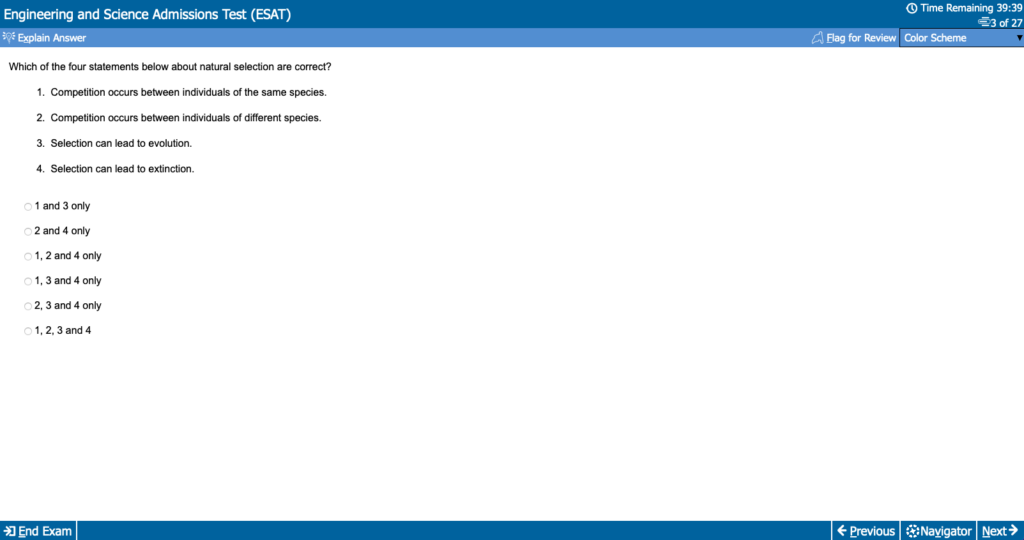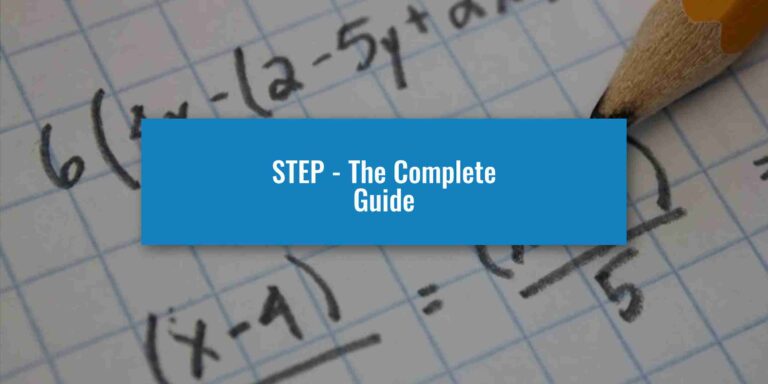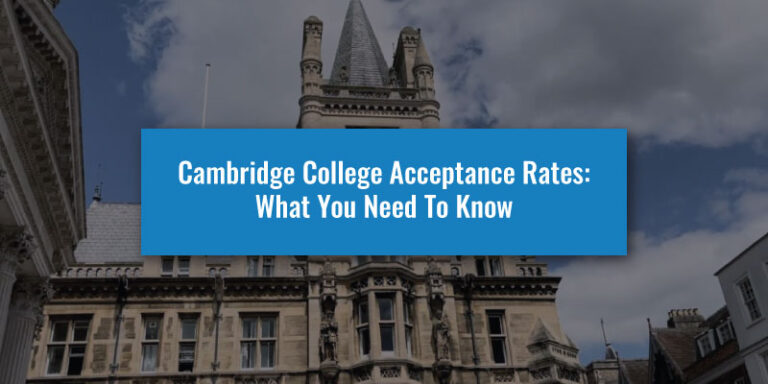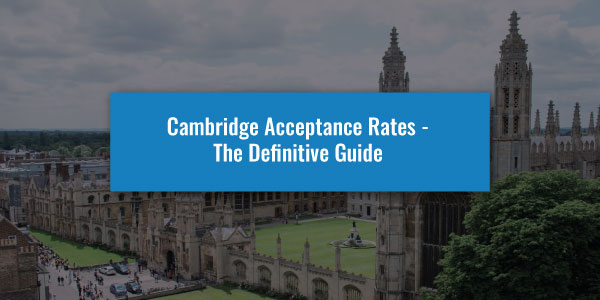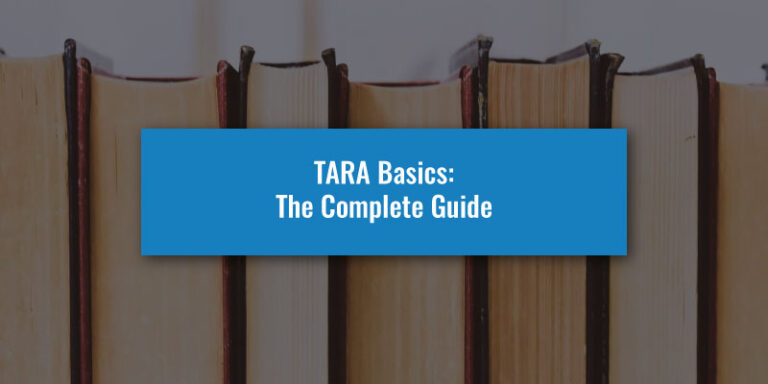In 2024, the University of Cambridge announced its partnership with Pearson VUE, a global computer-testing provider, to create a new admissions test for applicants of Natural Sciences, Engineering and more. This test would be known as the Engineering & Science Admissions Test (ESAT).
The ESAT will be a requirement for a large number of applicants now, so this guide will explain exactly what the test is, how it’s used and what you need to know for it. Let’s get started!
What is the ESAT?
The ESAT (Engineering & Science Admissions Test) is a computer-based examination, or admissions test, taken by applicants of various courses at the University of Cambridge and Imperial College London. It’s designed to test your understanding of mathematics and the three core sciences; Physics, Chemistry and Biology.
Who Has To Sit the ESAT?
The ESAT will be sat in 2026 for 2025 Entry applicants of Cambridge, Imperial College London and University College London (UCL). The test will be required for all applicants of the following courses:
Cambridge ESAT Courses
UCL ESAT Courses
Do I Have To Sit The NSAA or ENGAA?
In previous years, up until 2023, applicants for these subjects at Cambridge (not Imperial) would have to sit either the Natural Sciences Admissions Test (NSAA) or Engineering Admissions Test (ENGAA). Both of these tests have since been discontinued and have been replaced by the ESAT, so you will not need to sit either of these admissions tests. Be aware that you can still use preparation materials from these exams, though there are various differences between the ESAT and NSAA/ENGAA.
How Does Cambridge Use The ESAT?
Cambridge will be using the ESAT to assess applicants beyond their standard UCAS Application. Cambridge receives a huge amount of applications each year, so the admissions tutors need additional ways to judge their applicants and determine who would best be suited to study there.
Admissions tests are used for a wide variety of subjects at Cambridge and are primarily used to help admissions tutors shortlist applicants for interviews. Cambridge interviews roughly 70% of its applicants, so the barrier to entry isn’t too high as long as you perform well on the ESAT and provide a quality application.
ESAT results will also be considered during the final decision-making process, but interview performance is prioritised. Acceptance rates at Cambridge are much lower than shortlisting rates, so you will need to have a combination of strong interview performance, admissions test results and supporting application to be competitive.
Bear in mind that Cambridge does not set any minimum requirements for ESAT scores, so you could still be considered for interview even if your ESAT score is low.
How Does Imperial Use The ESAT?
Imperial College London uses the ESAT in a similar way to Cambridge, although the ESAT is one of only three major admissions tests that they use. Imperial will interview applicants for most courses, so your ESAT results will be considered during the shortlisting process. Imperial does not set a minimum score to achieve in the ESAT.
Who Runs The ESAT?
The ESAT is run by Person VUE, a company that creates and organises a wide range of computer-based tests across the globe. These tests are run in multi-purpose testing centres owned by Pearson VUE, of which there are over 500 across the globe, including over 100 in the UK.
The ESAT is actually being operated by a sub-division of the company created specifically for university admissions tests – University Admissions Testing UK (UAT). Currently, UAT runs the ESAT and the Test of Mathematics for University Admission (TMUA). Pearson VUE also operates the University Clinical Aptitude Test (UCAT) for UK medical schools and the Law National Aptitude Test (LNAT) for UK law schools.
Get a great ESAT score and earn your offer with support from UniAdmissions
At UniAdmissions, we have spent over 10 years preparing students for all manner of admissions tests, as well as the other aspects of their application. We have developed a comprehensive curriculum that can support you through any admissions test, including the brand new ESAT!
Discover our ESAT Programme below and find out how you can enrol and triple your chances of success.
The ESAT Format
Let’s now look at the format of the ESAT. As stated before, the ESAT is taken on a computer, meaning there is no physical question or answer sheet (although you should be given plain paper for working out). The ESAT is split into 5 subtests:
Each of these subtests features 27 multiple-choice questions and lasts for 40 minutes. Of these subtests, the only one that is required by all applicants is Mathematics 1. Beyond this, applicants will take 2 additional subtests, meaning no one is required to take all five subtests. This gives the ESAT an overall length of 120 minutes, with 81 questions to answer in total.
For most Cambridge applicants, you will be able to choose the other two additional subtests that you take alongside Mathematics 1. However, applicants for Engineering will be required to take the Physics and Mathematics 2 subtests. Imperial College London has not yet stated whether applicants will be able to choose their subtests.
ESAT Testing Platform
The ESAT is run on a custom testing program which you can see below:
On this programme, you will be presented with questions one at a time, along with the answer options as checkboxes. There will be up to eight answer options per question. At the top of the page, you will find the timer, indicating how much time you have left in this subtest, and the flag button, which allows you to highlight a question to go back to. The “Explain Answer” button will not be present on the actual test, this is just put in place for the sample test to provide worked solutions.
At the bottom of the page, you have options to go to the next and previous question. Once you’ve gone through all 27 questions, you will see the review screen, which shows the status of each question in the subtest (answered, unanswered, flagged). You can use this page to go back to any questions before the end of the time limit (you can also access the page via the “Navigator” button). Once the timer is finished, you will be moved on to the next subtest (or the end of the test).
Access "The Big Book Of Oxbridge Applications" For FREE
- Over 40 admissions test practice questions
- 28 example Oxbridge Personal Statements
- Interviews with Oxbridge students and graduates
- Additional downloadable resources
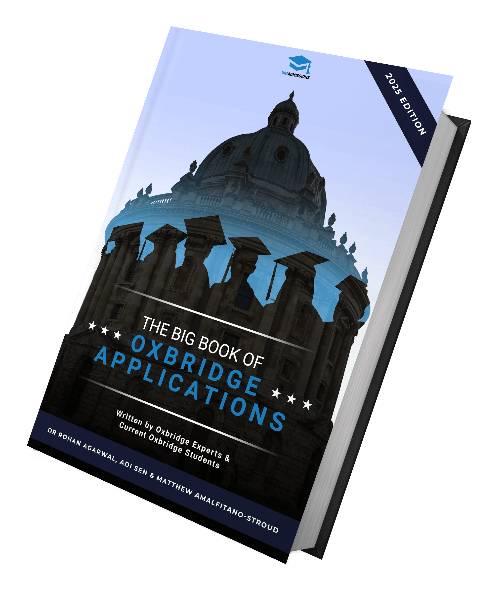
Access "The Oxbridge Application Vault"
- 300+ page ebook for Oxbridge Applicants
- 25 page ebook for Personal Statement
- 2h+ online course to succeed in any exam
- Online Oxbridge Success Calculator
- 12 page ebook about UniAdmissions
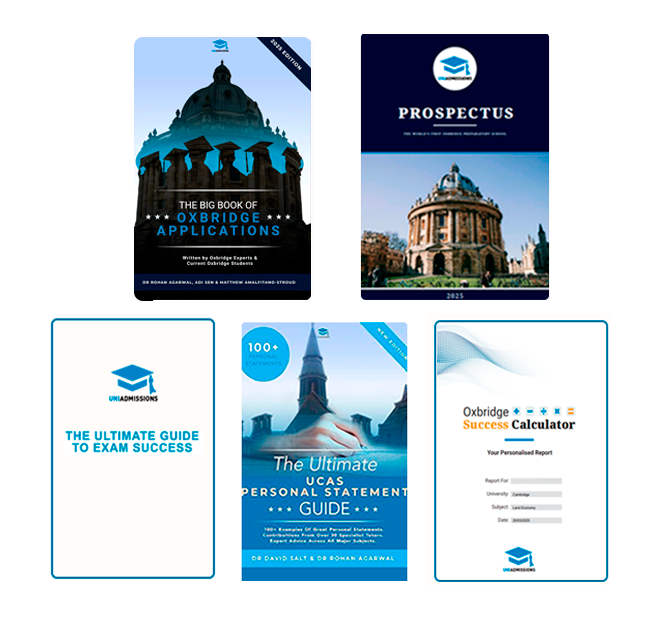
ESAT Key Dates
There are multiple important dates that you need to be aware of when taking the ESAT. Below are all of the most important dates, from registration to results:
| Event | Date |
|---|---|
| ESAT Registration Opens (October Sitting) | July 31st 2025 |
| ESAT Registration Closes (October Sitting) | September 29th 2025 |
| ESAT Testing Dates (October Sitting) | October 9th – 10th 2025 |
| ESAT Registration Opens (January Sitting) | October 27th 2025 |
| ESAT Registration Closes (January Sitting) | December 19th 2025 |
| ESAT Testing Dates (January Sitting) | January 6th – 7th 2026 |
As you can see, there are two sets of two-day testing periods across the admissions cycle, one in October and one in January. If you’re applying to Cambridge, you will need to sit the ESAT during the October testing period as the January testing period will be too late to be considered in the admissions process, which ends in mid-January. The January testing period can be used by those only applying to Imperial College London.
How To Register For The ESAT?
ESAT registration must be done via Pearson VUE’s online booking system. To do this, you must follow these steps:
1. Set Up A Pearson VUE account
First, you will need to set up a Pearson VUE web account (or UAT account) on the official UAT website. To do this, you will need to provide various details, including your full legal name (as seen on any form of ID). You will also have the option to provide demographic and educational data for the sake of research.
2. Receive Confirmation and Candidate ID
Once your account has been created, you will receive a confirmation email within 24 hours. You will then be able to log in and make alterations to your account, as well as view your candidate ID. You will need this when contacting customer services.
3. Book Your Test
Once ESAT test bookings are open, you will need to log into your account to book your slot. You will first need to find your nearest testing location and then select one of the available time/date slots available during your desired testing window (be aware that slots can get booked up if you register close to the deadline).
4. Pay For Your Test
The ESAT does require a fee in order to sit the test which will need to be paid before your booking is confirmed. Once you have paid the fee (either by card or with a bursary voucher), you will be sent an email confirming your slot.
ESAT Costs
Anyone sitting the ESAT will have to pay a fee before the booking is confirmed:
ESAT Fee - UK Applicants
£75
ESAT Fee - Non-UK Applicants
£130
Bursary vouchers are available for those who receive certain forms of financial aid (such as universal credit or job seekers allowance) that cover the full cost of the booking. These will need to be applied for before registration and must be applied for before the registration deadline for the testing period.
ESAT Access Requirements
Pearson VUE offers a variety of access arrangements to support those with different needs during their ESAT test. These will need to be booked before confirming your slot, but it is suggested that applicants with access needs do not complete their booking via the online system. Instead, you should contact the customer services line to enquire about booking the ESAT with access arrangements.
What Is Covered In The ESAT?
As previously mentioned, the ESAT tests applicants on their subject knowledge in four key components; Mathematics, Physics, Chemistry and Biology. Each of these is covered in its own subtest (two subtests for Mathematics) and has its own required knowledge. This required knowledge is all covered at A-Level (or equivalent) so there shouldn’t be anything that you won’t be taught at school.
Everything you need to know about the ESAT is covered in the official ESAT Specification. It’s essential that you read through this before you begin your revision and practice, but let’s quickly review the general topics you should expect to see in each of the five subtests:
ESAT Specification
Mathematics 1
Remember that this is the only subtest required by all applicants, so all of these topics are essential to know:
- Numeracy Skills: Knowledge of basic mathematical disciplines is essential, including the four operations, surds, systematic listing and vocabulary.
- Units: An understanding of various units of measurements, as well as conversions between two related units.
- Algebra: Ability to understand and use algebraic notation, index laws in algebra, quadratic expressions, linear functions, roots, graphs of functions, gradients, linear inequalities and quadratic equations.
- Ratio & Proportion: An understanding of various concepts including scale factors, ratio notion, direct and indirect proportion and compound interest.
- Geometry: Advanced knowledge of various geometric concepts and tools, including angles, points, trigonometry and bearings.
- Statistics: The ability to use statistics to solve mathematical problems and to interpret data and graphs.
- Probability: The ability to analyse frequency information, and apply ideas of randomness, fairness and equally likely events to questions.
Physics
This subtest is required by all Cambridge Engineering applicants, so you will need to ensure you know these topics:
- Electricity: You will need to understand the basics of electrostatics, electric circuits and the equations that relate to these.
- Magnetism: An understanding of the properties of magnets, magnetic fields, electromagnetic induction, transformers and the motor effect.
- Mechanics: Knowledge required for mechanics include kinematics, forces momentum, mass/weight, energy and Newton’s laws.
- Thermal Physics: An understanding of conduction, convection, heat capacity and thermal radiation.
- Matter: You’ll need to know about the states of matter, state changes, density, pressure and ideal gases.
- Waves: Make sure you understand wave properties, wave behaviour, sound waves, optics and the electromagnetic spectrum.
- Radioactivity: A knowledge of atomic structure, radioactive decay, ionising radiation and half-life.
Chemistry
This subtest isn’t required by any specific courses, but it would be highly relevant for anyone applying for Chemical Engineering & Biotechnology:
- Atomic Structure: Knowledge of the basis of all matter, including atom structures, electron configurations and isotopes.
- The Periodic Table: You’ll need to know how to use the periodic table in a variety of ways, as well as understand the layout, meanings and relationships between elements.
- Chemical Reactions: You should have an understanding of how to construct various chemical formulae and equations.
- Quantitative Chemistry: You’ll need a knowledge of relative molar mass, Avogadro's number and the empirical formula.
- Group Chemistry: An understanding of the halogens, properties of alkali metals and noble gases.
- Acids,Bases & Salts: An in-depth understanding of the substances and reactions of each of these.
- Rates of Reactions: A knowledge of qualitative effects, data interpretation and catalysts.
- Carbon/Organic Chemistry: You’ll need to know about the general concepts and finer details of alkanes, alkenes, polymers, alcohol and carboxylic acids.
- Metals: An understanding of metal reactivity, common properties, displacement reactions and metal ores.
- Chemical Tests: You should be able to recognise various tests for gases, anions and metals.
Biology
The Biology subtest isn’t essential for any course but would be a good pick for anyone applying for Veterinary Medicine:
- Cells: You’ll need to understand the function, structure and organisation of many different types of cells. You will also need knowledge of cell division and sex determination.
- Inheritance: An understanding of cell transference among off-spring, monohybrid crosses and various genetic terms.
- DNA: You should understand the purpose and structure of DNA as well as protein synthesis, and gene mutations.
- Gene Technologies: You’ll need to know the concepts of genetic engineering, stem cells and selective breeding.
- Variation: An understanding of natural selection, evolutions and their causes.
- Enzymes: You should have knowledge of the mechanism and factors of enzyme action.
- Animal Physiology: You should understand the theory behind photosynthesis, transport systems and physical structure.
- Ecosystems: You’ll need to know about ecosystem organisation, material cycling and biodiversity.
Mathematics 2
This subtest covers more advanced topics than Mathematics 1, so you will need to have a greater depth of knowledge and ability if you are taking this subset (all Cambridge Engineering applicants are required to take it):
- Algebra & Functions: You’ll need to know about the laws of indices, use/manipulation of surds, quadratic functions, simultaneous equations, many-to-one mapping and algebraic manipulation of polynomials.
- Sequences & Series: You should understand arithmetic series, binomial expansion and the sum of a finite geometric series and to infinity for a convergent geometric series.
- Two Dimensional Coordinate Geometry: You need to be able to answer questions with straight-line equations (y – y1 = m(x – x1) and ax + by + c = 0), coordinate geometry of circles and various circle properties, including point tangents, semicircle angles and opposite angles.
- Trigonometry: You should have knowledge of the sine, cosine and tangent rules/functions, radian measure and simple trigonometric equations.
- Exponentials & Logarithms: You should know about y=ax and its graph, the laws of logarithms, and solutions to equations of the form ax=b.
- Differentiation: You’ll need to know the applications of differentiation to gradients, tangents, normals, stationary points, increasing functions and decreasing functions, as well as differentiation for xn and the derivative of f(x).
- Integration: Be sure to revise definite integration, finding/combing definite and indefinite integrals, approximation of area, differential equations and the Fundamental Theorem of Calculus.
- Graphs of Functions: You should know graphs of common functions, the effects of simple transformations, altering values, geometric interpretation of algebraic equations, use of differentiation to determine graph shapes, use of algebraic techniques to determine intersections.
Check out our ESAT Specification Guide for a more in-depth overview of the ESAT’s content and how you can start revising.
UniAdmissions offers the most comprehensive support for the ESAT
Within our ESAT Programme, our students have access to expert Cambridge tutors, intensive live courses, a wide selection of materials and much more. All of this is underlined by our carefully crafted curriculum, designed to help you make the most of your resources and boost your score.
Discover our ESAT Programme below and find out how you can enrol and triple your chances of success.
How Is The ESAT Scored?
The ESAT is initially scored very simply; each question you answer correctly is worth one mark. Using the total marks you have from each subtest, your raw marks are then converted into a final ESAT score within a scale from 1.0 (low) to 9.0 (high). The conversion table for the test is currently not known, nor is it known if the score conversions will differ between subtests (this was the case for the NSAA and ENGAA, which this scoring system is based on).
There is no negative marking in the ESAT, meaning you will not lose marks for incorrect answers. There is also no Pass or Fail score, so applicants are encouraged to just do as well as they can. You can learn more about what a good ESAT score is in our ESAT Scoring and Results Guide
When Will I Get My ESAT Results?
ESAT test takers should receive their results roughly six weeks after taking the test, meaning those who sat the test in October would get theirs in late November (week commencing the 25th) and those in January would get theirs in mid-February (week commencing the 17th).
The universities that you’re applying to will get your results automatically fairly soon after the testing period, so you won’t need to worry about sending them to Cambridge or Imperial.
How To Prepare For The ESAT
Choose Your Sections
The first thing we would recommend any ESAT test-taker do is think about the subtests you’re going to take. Unless you’re a Cambridge Engineering applicant, you’ll have to pick from two of the four optional subtests in the ESAT.
While it’s alright to be unsure of which ones you want to tackle at first, we would recommend choosing as soon as you can so that you can begin your preparation. Since you’ll only need to choose two of these four tests, you won’t need to prepare for two of them either, which will save you a great deal of time and help you focus your efforts.
If you’re unsure of which to pick, consider which subjects you’re more confident with and which are most relevant to your subject. If both of these factors line up, then you’ve found your options. But if a subject is only one or the other, it’s always best to focus on the subjects that you’re stronger at, as your picks don’t affect your application in any way.
Create A Preparation Plan
Before you start preparing, we would always suggest creating a plan of attack. It’s important to organise your time and materials so that you don’t have to worry about things during your revision session.
A good preparation plan should consist of a schedule for when and how you will revise or practice during the time you have available. If you want to be even more organised, consider what areas and topics need the most time (usually your weakest areas) so you know exactly what you’ll be covering in each session. However, make sure this schedule can be flexible as plans could change at any time.
When planning, you should also gather the necessary materials for your preparation, including books, online guides and question banks. Having all of this available beforehand will save you a lot of time and energy later on.
Complete Practice Questions
While revising subject knowledge from textbooks is a great way to refresh your understanding of the subjects, the most valuable thing you can do to prepare for an admissions test is to work through practice questions. Having lots of practical experience with the types of questions you’ll be facing will help you feel confident walking into the test, as there won’t be any surprises waiting for you.
Since the ESAT is a new admissions test, there currently aren’t too many ESAT-specific question banks available. However, a full ESAT question is included within our ESAT Programme, as well as our relevant Oxbridge Programmes.
Utilise Past Papers
Question banks aren’t the only way to get ESAT practice questions, as there is also a large library of past papers to utilise. These aren’t past papers for the ESAT however, as the exam has never been sat before and will not have published past papers due to it being a computer-based exam.
Instead, you will be able to utilise past papers from the Natural Sciences Admissions Test (NSAA) and Engineering Admissions Test (ENGAA). These are the two Cambridge admissions tests that preceded the ESAT and, specifically the NSAA, follow an almost identical question structure and required knowledge. While the format of the exams are different (Section 2 in each exam doesn’t reflect what will be seen in the ESAT), they are still a great source of practice questions. Just bear in mind that the ENGAA past papers only cover Mathematics and Physics.
If you’re looking for an official ESAT practice test, you can find one on the UAT website for free. This is a full test that uses the actual system that the ESAT will be run on, so it’s a good idea to get well-acquainted with this system through this practice test so that you can complete the test more efficiently.
And that concludes our guide to the basics of the ESAT. You now know all the important information that you will need for your ESAT preparation and testing. From here, you should begin to explore the different subtests to see what you will be tested on. Then you can start your revision and practice to ensure that you’re more than ready for the big day.
Not sure whether you should apply to Oxford or Cambridge? You may be basing your decision on the admissions tests used, so we compared the ESAT to the PAT and MAT in a dedicated guide to see how different these exams actually are and how much you should take it into consideration.
This test is still very new, so it can be a bit intimidating. However, we at UniAdmissions have seen many new admissions tests debut and we’re always ready to support applicants through the process. Thanks to our 10+ years of experience, we have developed the formula for Oxbridge success no matter what part of the process changes, so discover how you can enrol into our ESAT Programme or Oxbridge Programme (including Natural Sciences and Engineering) today by booking a free admissions consultation.
Get the ESAT score you need and earn your offer with support from UniAdmissions
At UniAdmissions, we have spent over 10 years preparing students for all manner of admissions tests, as well as the other aspects of their application. We have developed a comprehensive curriculum that can support you through any admissions test, including the brand new ESAT!
Discover our ESAT Programme below and find out how you can enrol and triple your chances of success.
